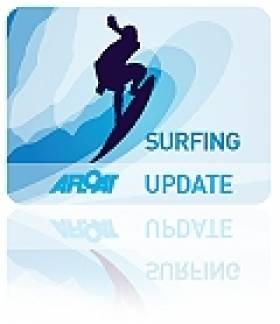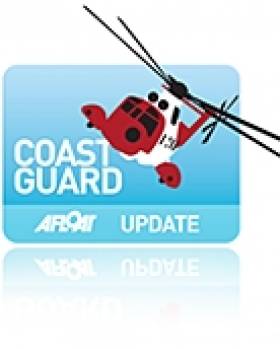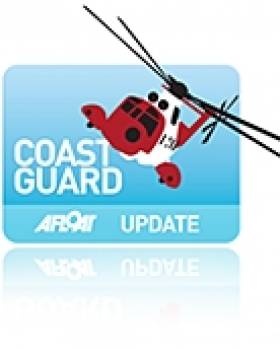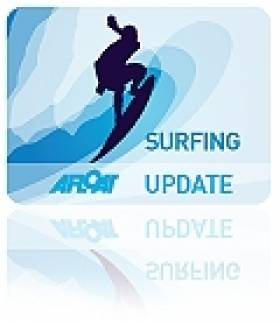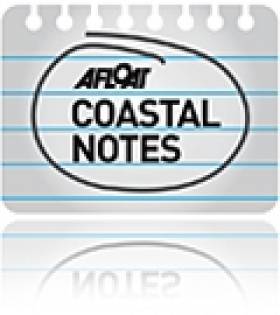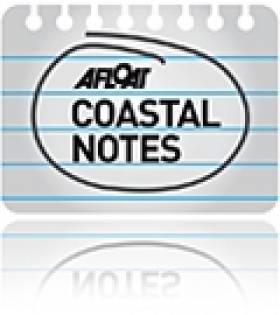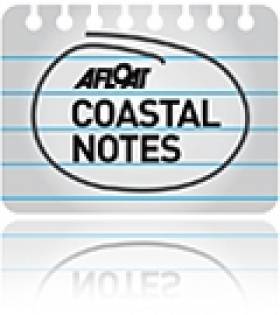Displaying items by tag: Lahinch
Man Airlifted To Hospital After Lahinch Cliff Fall
#CliffFall - Independent.ie reports that a 23-year-old man was airlifted to hospital after falling 40ft into the sea from a cliff near Lahinch early this morning (Sunday 5 June).
Shannon's Irish Coast Guard helicopter Rescue 115 launched to the scene after the Doolin coastguard unit had difficulty recovering the man from the sea.
It's understood that the casualty was with friends at the cliff top around 5am when he fell and lost consciousness in the water.
Freesurfer Jamie O'Brien Sings Praises Of Ireland's Waves
#Surfing - American surfing pro Jamie O'Brien sings the praises of Clare's big waves as part of his latest web series on chasing the world's best surf.
Speaking with entertainment.ie ahead of the fifth season of his RedBull.tv show Who is JOB, O'Brien hailed the "world class" waves at Lahinch, despite the cold and the unpredictable weather this spring is bringing us.
But O'Brien – a pioneer of the concept of 'freesurfing' – was equally impressed with the "hardcore" dedication of local youngsters to what's still an emerging sport in Ireland.
"You gotta be hardcore to go surfing in that cold water," he said.
Another boarder who's been exploring Ireland's surfing scene is Andrew 'Cotty' Cotton, the star of his own Red Bull web series that started this month with his first stop along the Wild Atlantic Way in North Donegal.
Surf Meets Trad In New Video Tribute To Lahinch's Big Waves
#Surfing - Ireland's surfing scene gets another tribute in this new short film from surf-wear brand Billabong, via BreakingNews.ie.
Matching the pulsing rhythms of a trad session at Kelly's Bar with breathtaking action from the wild waves off Lahinch in Co Clare was an inspired choice for this clip, produced by the former title sponsors of the annual Big Wave Awards.
That's a contest with a local connection as Lahinch native Ollie O'Flaherty was nominated in 2012 for the massive swell he caught along with Mullaghmore regular Andrew Cotton.
This particular clip, however, features American Shane Dorian with Frenchman Benjamin Sanchis, a recent challenger for the biggest wave of all time, taking on the intimidating water walls of Aileens and Rileys.
Surfer Found Safe And Sound In Lahinch Beach Search
#Coastguard - The Clare Herald reports on the happy outcome after a search for a missing surfer near Lahinch yesterday afternoon (Monday 15 December).
Members of the Irish Coast Guard's Doolin unit began combing the beaches of Lahinch after an emergency call from a concerned family member.
But the surfer was quickly locoed safe and well just south of the Co Clare town, a popular surfing hotspot even in winter.
Elderly Beachgoer Dies At Lahinch
#Coastguard - A man in his 70s has died after collapsing in the shallows at the popular beach at Lahinch, Co Clare yesterday afternoon.
As The Irish Times reports, the man suddenly collapsed and was quickly pulled from the water by fellow beachgoers.
Beach lifeguards reached the unconscious casualty within a minute and used a defibrillator to try to revive him, while the Doolin unit of the Irish Coast Guard and paramedics from Ennistymon and Ennis raced to the scene.
Despite best efforts, however, he was pronounced dead at the scene of a suspected heart attack.
Women of All Ages Learn Surfing in Lahinch
#surfing – Surfing, yoga, belly dancing: it's time to head for the beach and dip your toes in the sea! Lahinch will be heating up as host town to hundreds of women at Mermaids, the Irish Surfing Association's national women's weekend, on the 14/15th June.
The Mermaids weekend is an opportunity to learn to surf - or to improve your skills - under the watchful eyes of some of Ireland's top female surfers. Skilled female surf instructors, alongside past and present female members of the Irish Surf team, will give participants a fun, safe and inspirational surfing experience.
Mermaids is a surfing weekend that provides women (and girls) with an opportunity to meet and share information and advice on surfing while introducing newcomers to the sport in an all female environment. The event brings women of all ages and surfing abilities together in a celebration of women's surfing in Ireland. Whether you are 8 or 80 - if you are interested in surfing, this is an opportunity to learn more!
The weekend is about learning, inspiring others and sharing your excitement and enthusiasm for surfing. Everyone is encouraged to enjoy their time in the water whilst also learning about surfing technique and water safety. Out of the water, new friendships are made and surf stories are shared during the beach lunch, yoga, belly dancing and night time entertainment.
Activities include surfing lessons and coaching (equipment provided); talks on all aspects of surfing; yoga; beach lunch; and belly dancing! There is no requirement to book, just turn up. Attend the full weekend, one day or half a day. Registration between 9am and 3pm on Saturday (last surfing lesson going into the water at 3pm) and 10am-2.00pm (last lesson going into the water at 2pm) on Sunday.
Mermaids is hosted under the Women in Sport Initiative, run by the Irish Sports Council, to encourage more Irish women to participate in sport.
Galway Puts Storm Damage Costs At Hundreds Of Thousands
#Storm - A special report on the extent of damage caused by the recent storms in Galway City has estimated the cost of repairs at more than three-quarters of a million euro, according to Galway Bay FM.
The figure includes estimated costs of repairing footpaths and public use facilities damaged by the extreme winds and flooding experienced citywide - and in particular the beaches and promenade at Salthill, which more the brunt of the Atlantic swells and high tides.
In addition, repairs to Leisureland in the seaside suburb are pegged at half a million euro alone.
Further down the West coast in the storm-ravaged Clare town of Lahinch, The Irish Times reports that a start-up surf school has had a horrendous start to the year, losing its van to the floodwaters that caused significant and expensive damage to the promenade.
Storm Surges Send Seasiders Fleeing In Lahinch As Flooding Continues
#Flooding - Seaside residents in the popular surfing spot of Lahinch in Co Clare were evacuated yesterday (3 January) after massive swells driven by strong storm-force winds encroached half a kilometre inland.
According to The Irish Times, the emergency came amid some of the worst weather ever experienced in the West Clare coastal town.
Aside from flooding homes throughout the town, the storm surges collapsed metal fencing on the shorefront and sent concrete wall cappings some 50 metres across the promenade car park.
Nearby, part of the old pier in Liscannor were destroyed by the violent wind and wave action, while the 150-year-old base of the Irish Coast Guard's Doolin unit was also damaged, with the road leading from the base to the pier broken up.
Elsewhere in the country, records were broken in Dublin as the River Liffey saw its highest ever tide, breaking its banks near Heuston Station yesterday afternoon.
The Irish Independent reports that Wolfe Tone Quay and Victoria Quay were closed for an hour while Dublin City Council workers pumped the floodwaters from the roads.
In the coastal suburb of Clontarf - the worst-hit area of the capital, experiencing its worst flooding in a decade - seafront businesses were spared when floodwaters stopped just metres from their doors.
Meanwhile, Galway and Cork remain on high alert as high tide brings floodwaters to city streets, with the Salthill Promenade still a no-go area.
'Whale Vomit' Could Be Worth Thousands To Clare Surfing Pair
#Ambergris - The idea of 'whale vomit' is surely off-putting to most, but to high-end perfume companies it's worth more than gold - much to the delight of two Irish surfers who believe they've found a lump of the stuff.
The Irish Daily Star, via IrishCentral, reports that Alan Davey and Brian Miller discovered the turnip-sized lump of what appears to be whale excrement on the beach at the popular surfing haunt of Lahinch on the Co Clare coast.
And if it turns out to be the product of a sperm whale, it might well contain the valuable substance known as ambergris - produced in their digestive tract, and traditionally used as a key ingredient in perfumes - and could fetch the pair a cool €50,000.
A similar find on a beach at Morecambe in Lancashire last month could be worth as much as €115,000 to its finder, according to The Guardian.
Surfing is Ireland's 'Best Kept Secret' No More
#SURFING - Ireland can no longer claim to be the surfing world's best kept secret, as the Irish Examiner reports, as thousands of waveriders of all skill levels now flock annually to the west and northwest coasts to sample the swell.
Indeed, Ireland is arguably the hottest place to be for surfing right now, and RTÉ Travel rounds up the best spots to hit the water around the coast - including some that might surprise you.
Bundoran is this country's surfing mecca, and for good reason. Recently making National Geographic's list of the world's top 20 surfing towns, the Co Donegal surf capital has spots for everyone from experts to beginners, and boasts a choice of 10 surf schools affiliated with the Irish Surfing Association.
Further down the coast is Sligo, renowned among the surfing elite for the giant rollers off Mullaghmore Head but also a great place for learners, especially at Strandhill and Enniscrone - although "big waves, clean waters and great surfing" are to be found anywhere along the coastline.
Mayo continues the trend, with Bertra in Clew Bay and Keel Strand in Achill standing out, while Clare is home to the famed waves at Lahinch - home turf for big wave surfer Ollie O'Flaherty.
Further along, Kerry and West Cork can boast of a number of top-class surfing destinations, including some stretches just perfect for absolute beginners.
But it doesn't end there, as even the southeast and east coasts can hold their own - as Tramore in Co Waterford and Brittas Bay in Co Wicklow can attest.



